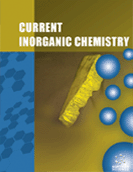Abstract
Various experimental tools have been applied for characterization of materials and evaluation of their functionalities. Among them, thermodynamic methods are unique in the sense that the energetic and entropic aspects inherent in materials can be directly observed. Physical quantities obtained from thermodynamic measurements reflect macroscopic aspects of materials. However, because those quantities are closely related to the microscopic energy schemes of all kinds of molecular degrees of freedom in a statistical manner, one can gain detailed knowledge on the microscopic level on the basis of precise thermodynamic investigations. Among them, heat capacity calorimetry is an extremely useful tool to investigate thermal properties of materials, in particular at low temperatures. For correct understanding of functionality of materials, it is crucially important to complementarily adopt both spectroscopic and/or structural methods leading to microscopic aspects of materials and thermodynamic methods revealing energetic aspects. The aim of this thematic issue is to review calorimetric studies on functional inorganic materials to show the important roles played by thermodynamic studies. The topics picked up in Part I of this thematic issue are the following four functional materials: (1) Host-guest systems under high pressure: Host-guest systems have potential possibility for selective storage of the guest molecules. (2) Mixedvalence metal complexes: Electron transfer between the mixed-valence metal ions, such as M(II)M(III)X, M(II)M(III)(C2O4)3 or Fe(II)Fe(III)(C2O2S2)3, provide a variety of phase transitions in which the magnetic and electronic properties are dramatically altered. (3) Materials showing negative thermal expansion: Materials that exhibit negative thermal expansion behavior are of interest because of the potential to couple them with materials that exhibit positive thermal expansion to create composites whose thermal expansion properties can be finely tuned. (4) Metal oxide nanocrystals: Metal oxide nanocrystals have potential for applications in many technologies including solar energy conversion, batteries, and ductile ceramics. These materials have properties that are highly dependent on the physical dimensions or grain size. Thermodynamic method can detect some of these peculiar aspects. Papers concerning calorimetry of other functional materials will be published in the forthcoming Part II and Part III. We would like to thank Prof. Yann Garcia, the Editor-in-Chief of Current Inorganic Chemistry, who invited us to edit a thematic issue concerning calorimety of inorganic materials. We would like to acknowledge all the authors who accepted our invitation to contribute to this thematic issue, as well as the reviewers who invested their valuable time to ensure the high scientific quality of all contributions.
 17
17

